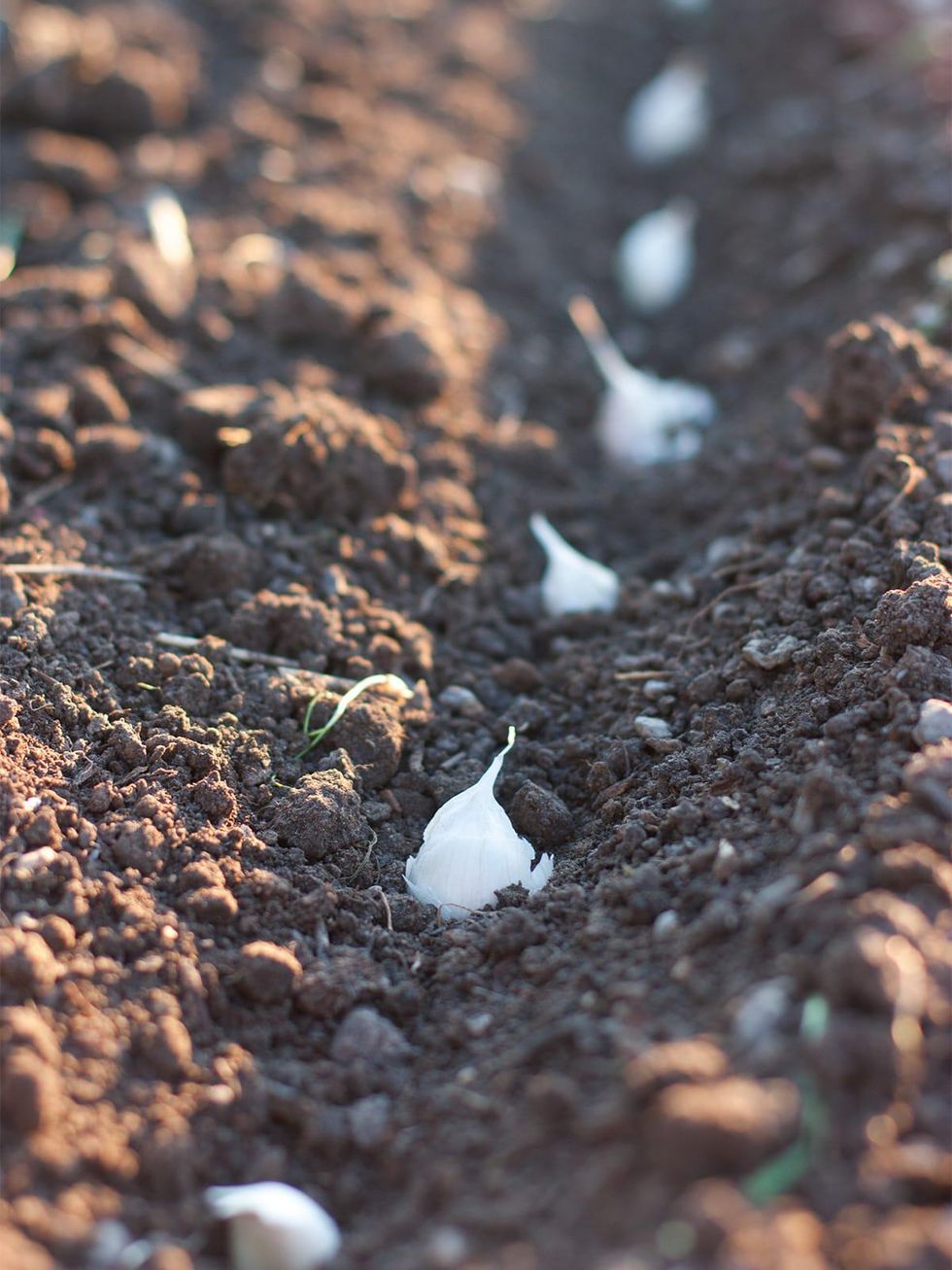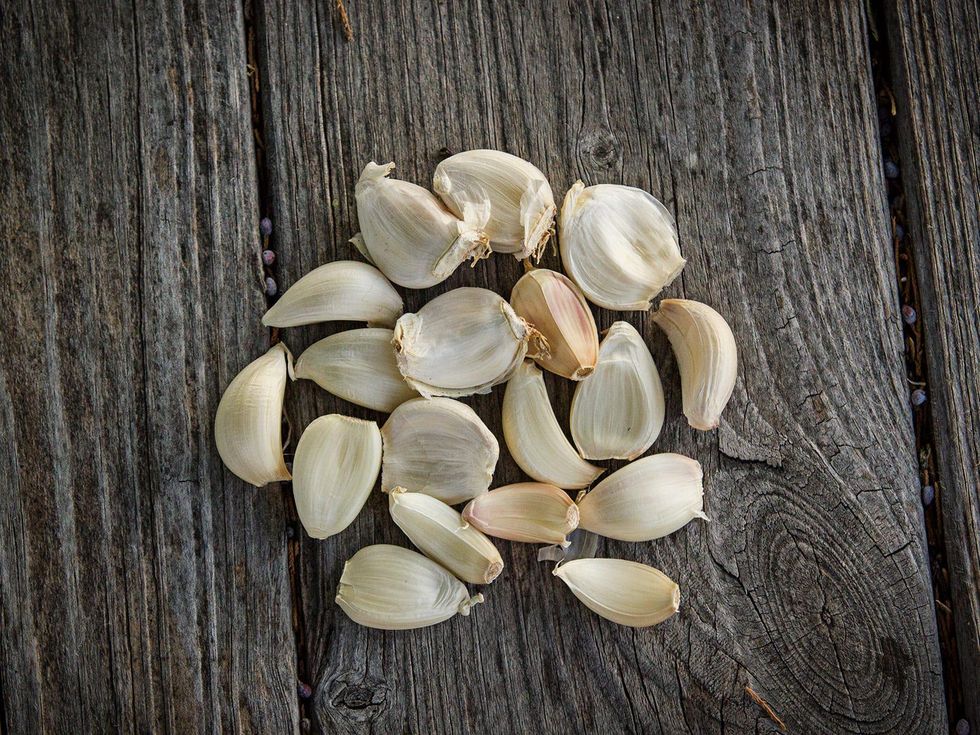The Farmer Diaries
Texas farmer finds that garlic grows down easy
A few years ago, I went out for a bike ride one spring day and discovered what seemed to be wild onions, growing along the country road near where I live. Mowers who'd been hired by the county were clearing off the tall grass. The air was filled with the smell of cut onions, more pungent than ordinary onions, maybe even gamy.
They were clustered in patches for about a hundred feet along the road, growing parallel to a creek called Little Onion Creek. I was fascinated by how the onions might have gotten there. All the evidence suggested that I had stumbled upon a part of the area's heritage and a rare type of onion that begged to be preserved.
I returned in late summer with a shovel to take a few specimens back to my house. I loaded up my cart with whatever onions I could uproot without disturbing the healthiest plants. Whenever I take a sample of plants from vacant home sites or natural habitats, I try to do so without damaging the stand of plants I've found. I started hauling the load back to my residence when my neighbor saw me and asked, "Is that my garlic?"
With one question, he destroyed my conjecture and identified what I had harvested. He explained that, years ago, a friend of his had thrown cloves of garlic into the ditch – cloves that rooted, grew, reproduced and spread year after year until they covered the ditch bank. They had nothing to do with the name of the creek and only dated back to the '90s – the 1990s, that is.
The economics of garlic are impressive: Every $3 bulb can produce up to $12 worth of harvested garlic.
I learned two lessons: First, wild speculation is no substitute for historical research. Second, garlic is easy to grow.
I now grow several varieties of garlic. The economics are impressive: Every $3 bulb can produce up to $12 worth of harvested garlic. As with every other crop, garlic is more flavorful when it's farm fresh and homegrown. The reason: The grocery store variety, known as California Early, is planted commercially for its ability to sit in storage for up to a year. What's gained in shelf life is lost in flavor and subtlety. Still, I plant California Early as a sure bet. Silver Rose is a mild garlic that must be eaten a few months after harvest; I plant it for its flavor and ability to produce monster bulbs that make me feel like a skilled grower.
This year, I will add a few more varieties from organic suppliers just to see what I like. I'll choose only softneck varieties; that's what we plant in in the lower half of the country. However, before I knew that hardnecks were for the north and softnecks for the south, I planted a bed of hardnecks without incident, and they did quite well, too.
Plant and forget
Everything about growing garlic is easy, as long as it gets a taste of all four seasons. I plant it in the first week of September so it can take root, send up its leaves and take hold before winter. Winter triggers its reproductive cycle. The following spring and summer finish the cycle up, so that they're ready to harvest by summertime, almost a year after they're planted. Unlike lettuce which is ready in six quick weeks, garlic requires patience.
To plant them, I take a bulb, break it into cloves and plant the cloves where they will get a full day of sunlight, no shade, just below the surface of the soil, with the root side down and the pointed rootless side up. The root side is usually rougher than any other side, so it's an easy find. They need about four inches of space in every direction. But a 4-foot by 8-foot bed can accommodate a year's worth of garlic for the average garlic eater. Aside from weeding and an occasional watering to keep the soil moist but not soggy, garlic can be forgotten, as my roadside discovery shows.
A few weeks after they're planted, they'll send up an attractive stalk that slowly adds several long narrow leaves until the plant reaches a foot high. Underground is where the neat stuff happens. Each clove will start adding more and more cloves to the plant so that when it's time to harvest the garlic, they'll have transformed into a veritable bulb just like the ones in the produce aisle.
Everything about growing garlic is easy, as long as it gets a taste of all four seasons.
In mid summer, I know they're ready to harvest because the stalky leaves start to turn yellow and bend over. Pulling each plant up from the ground by its stalk is not advisable; it almost always results in the stalk breaking off and the bulb staying underground. Instead, I use a garden trowel to lift the bulbs up with one hand while I hold the stalk in the other. Keeping them intact makes it easier to handle them.
After I harvest garlic, I lay it out on the ground to dry in the sun for a few days. Once dry, the remaining soil on the bulbs is easily brushed or knocked off and the outer skin on the bulbs becomes papery and fragile. At this point, they're ready to store wherever it's cool and dark, such as indoors in a pantry.
As garlic sits in storage, its flavor will change. Some varieties become milder, others hotter. If they turn soft and almost gummy, they're past their prime. California Early stands out when it comes to storage, leaving me without my favorite pizza topping for only about three months of the year. Other varieties are a brief pleasure of only four to six months.
Enduring and persistent
Garlic is also easy to save for the next season's planting. I choose the biggest bulbs from what I've harvested and store them with the rest until it's time to plant again, usually only a month or two after they were harvested. I leave the bulbs intact and break them into cloves only a week before planting.
From year to year, I plant garlic in a new bed so that the soil from the former bed can recover whatever nutrients it has depleted; rotating garlic around the beds also reduces the chance of garlic viruses getting a footing in a bed's soil. There are no other pests to watch for with garlic.
Despite my best effort to maximize my harvest, I always seem to miss several bulbs if the stalk has broken off and there's no evidence above ground of where they are. So, over the years, more and more of my beds have unintended volunteer garlic plants that grow between whatever I've planted. Garlic deters pests, so they've sort of become a part of my integrated pest management strategy with no extra effort.
Garlic's persistence to grow even when nobody's taking care of it is remarkable. My first harvest of garlic from the roadside is still growing and spreading in the field where I planted it years ago. Should there ever be a collapse of society, an uprising of the living dead, outbreak of smallpox or any other catastrophe, I should still be set for garlic.



